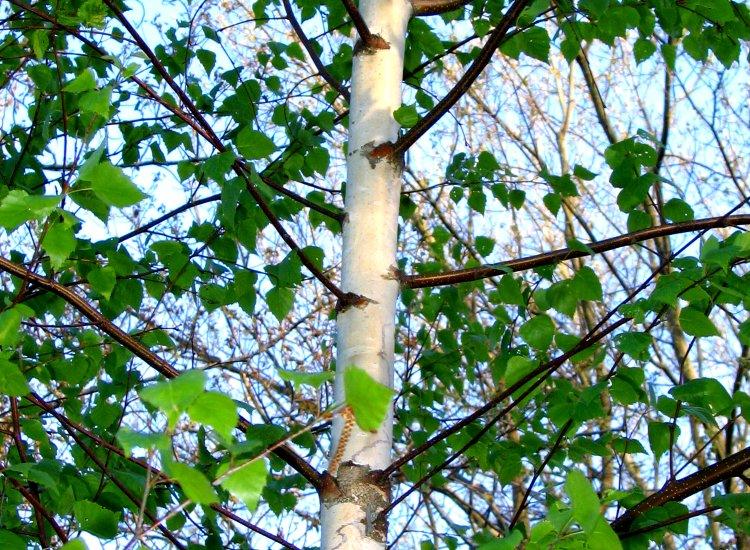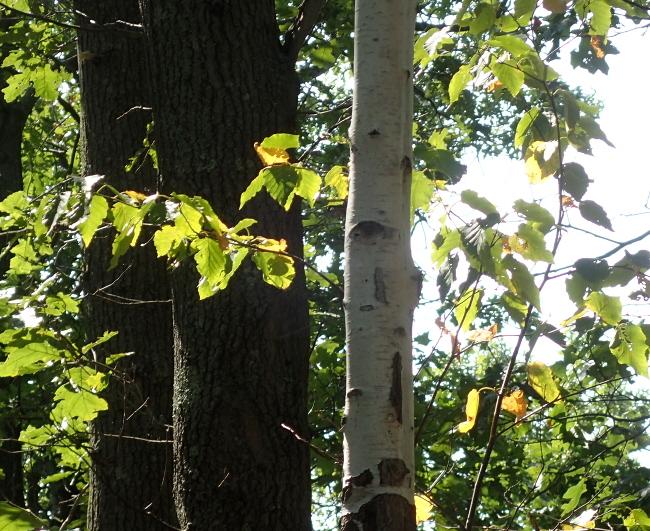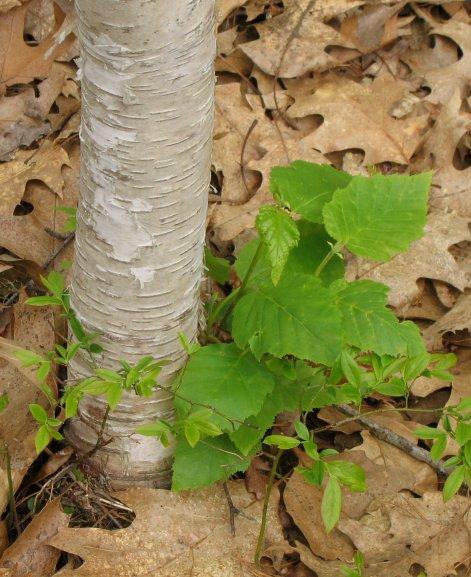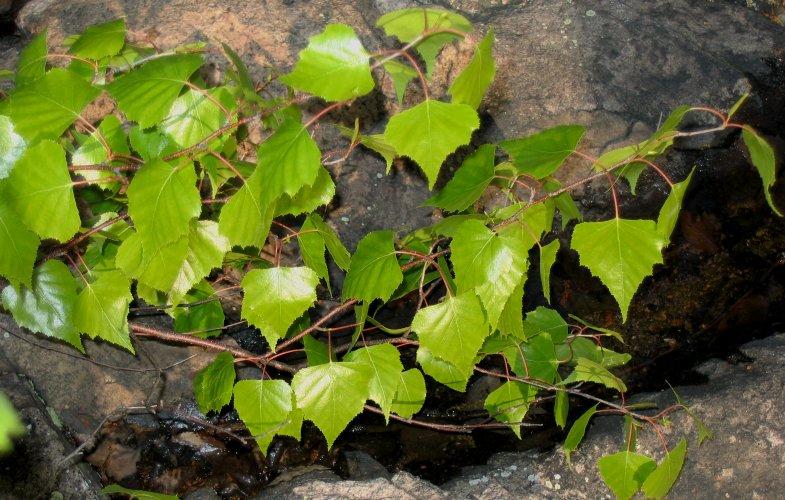Hybrid Birch (Paper Birch x Gray Birch)
Betula papyrifera x populifolia
This hybrid of two native birches is relatively frequent in eastern Massachusetts. Both parent species have white bark, though
in paper birch the bark is peeling in horizontal strips and colored brighter white; whereas in gray birch, the bark is duller,
tightly embracing the trunk, and typically forming a large black triangle under each large branch. Also, the leaves of parent
birches differ by their silhouette: in paper birch they are rounded at base, with a short-pointed tip, while in gray birch
leaves are triangular (deltoid), with a more or less straight base line and a long, narrow tip. Additionally, gray birch
has one unique character: catkins (the drooping congregations of staminate flowers) never form groups, but are solitary. In
all other birches, we see pollen catkins in groups.
The hybrid birch has inherited characters from both parents. Its bark is not peeling, with black triangles marking large branches,
like the bark of gray birch; the leaf shape is similar to that in paper birch;
and catkins are produced in groups of 2-3, also like those in paper birch.
Of the two parent birches, it is gray birch that is very common in Plymouth County and generally in eastern Massachusetts.
In fact, it grows close near the hybrid birch, so you can see the difference. The other parent species, paper birch is a northerner
in our flora and has been seen around very seldom, especially recently, when the climate is rapidly turning warmer.

Similar hybrid in Blue Hills Res., Canton in May: bark tight, not peeling, catkins solitary, but the leaf shape is like that
in paper birch.

Another example of the same hybrid. Great Esker Park, Weymouth, August 26

Paper birch in Boxford Forest, north of Boston, May 1

Gray birch in Stony Brook Res., Boston: deltoid leaf shape (that is, triangular, with straight-line base of leaf blade and
a long, narrow tip).